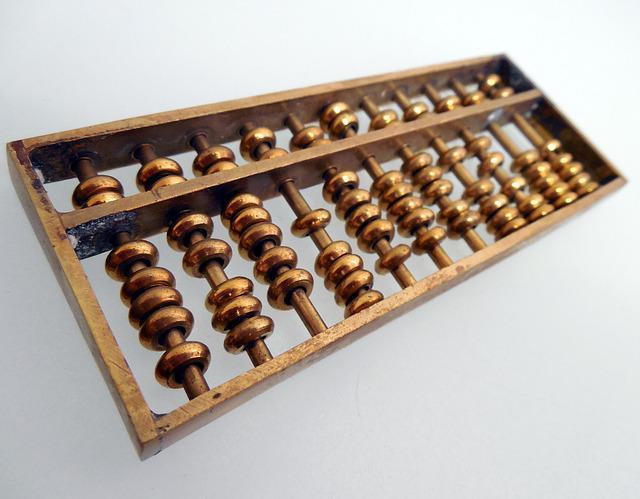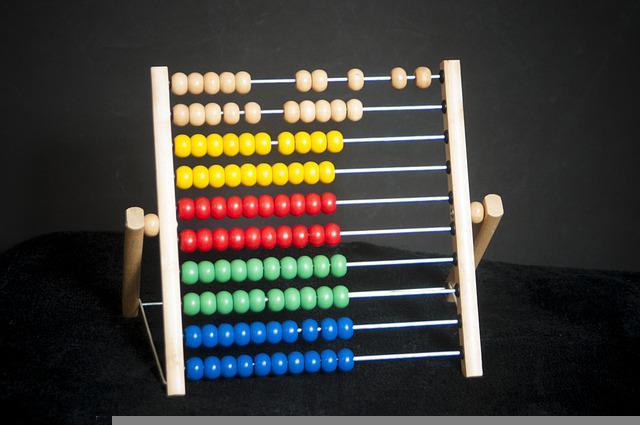
Did you know that the Romans used an abacus to calculate taxes? In more recent times, people have started using the abacus again to teach counting and the basics of mathematics because it has been proven to be beneficial.
However, many people don’t know that the history of the abacus dates back much farther than just being a tool for business transactions or tax collection.
The abacus had come a long way since it was simply a wooden surface with a few pebbles on it when it was first created. It was just a wooden surface with few pebbles on it when it was invented.
So, without further ado, let’s find out who invented the abacus.
Who invented the abacus?
The abacus is a type of calculating tool that has been used for centuries. The exact origins of the abacus are uncertain, but it is believed to have been first used by the Sumerians in around 3,000 BC.
The first recorded use of the abacus was by a man named Hammurabi, who was the king of Babylon from 1792 to 1750 BC. He used the abacus to calculate how much grain his subjects had to pay him in taxes.
Over time, the abacus spread to other cultures and became an essential tool for merchants and traders.
Today, there are many different types of abacuses in use around the world, each with its own unique design.
The abacus remains an important tool for those who need to perform quick calculations.
Read also: Who Invented Books

Mesopotamian origin of abacus
The origin of the abacus can be traced back to ancient civilizations such as Mesopotamia, Sumer, and Babylon.
The Sumerians, one of the oldest civilizations in human history, used the first abacus between 2700 BCE to 2300 BCE for counting.
Although there is no direct archaeological evidence of Mesopotamians using the abacus, textual research, and logical assumptions suggest that the abacus was integral to Mesopotamian culture even before the development of writing.
Christopher Woods noted that people learned how to use an abacus before learning how to write, indicating its significance in early civilizations.
The abacus traveled from Mesopotamia to other regions, including Greece, where it played a crucial role in advancing mathematical calculations.
Pythagoras is believed to have introduced the abacus to Greek civilization after adopting the skill and device during his visit to Babylon.
The Greek artifact known as the Darius Vase, dated around 300 BCE, depicts a royal treasurer using an abacus with Greek numerals and counters for calculations.
While the exact origins of the abacus remain somewhat obscure, it is clear that ancient civilizations like Mesopotamia played a fundamental role in its development and dissemination.
How many beads are in the abacus?
The abacus is composed of a series of beads that are strung on wires.
The number of beads varies depending on the type of abacus, but there are typically between 25 and 100 beads in total.
Each bead represents a unit of value, and the placement of the beads on the abacus corresponds to a specific numerical value.
For example, on a Chinese abacus, there are two beads in the top row and five beads in the bottom row. This arrangement represents the number 25.
Abacuses can be used to perform addition, subtraction, multiplication, division, and other mathematical operations.
Read also: Who Invented the First Gun
What are the types of abacus?

There are many different types of abacuses in use around the world. It includes:
Chinese abacus (Suanpan)
The Chinese abacus, also known as the suanpan, is a handheld calculator that has been used for centuries. The suanpan consists of a deck, a beam, and a sling.
The deck is divided into two sections by a horizontal bar, and each section has five vertical rods. The beam is used to move beads up and down the rods, and the sling is used to hold the abacus in one hand.
The suanpan can be used to perform addition, subtraction, multiplication, and division. It is also a useful tool for memorizing numbers.
Japanese abacus (Soroban)
The Japanese abacus, or Soroban, is a simple yet powerful calculating tool that has been used for centuries. The Soroban consists of a rectangular frame with vertical rods that hold beads in place.
Each bead has a value of five or one, and the beads are moved around to represent numbers.
The Soroban is easy to learn and use, and it can be used for simple addition and subtraction as well as more complex calculations.
What’s more, the Soroban can be used to develop mental arithmetic skills and improve problem-solving abilities.
Russian abacus (Schoty)
The Russian abacus, or Schoty, is a traditional calculating tool that dates back to the Middle Ages.
Unlike the Japanese abacus, which uses beads on rods, the Schoty consists of a frame with 10 horizontal wires, each divided into 10 sections. The wires represent units, tens, hundreds, and so forth up to ten thousand.
To perform a calculation, the abacus user manipulates the wires with their fingers to represent the numbers involved.
The Schoty is still used today in many parts of Russia, as it is an efficient and accurate way to perform calculations.
There are many different types of abacuses in use around the world, each with its own unique design. The abacus remains an important tool for those who need to perform quick calculations.
Benefits of using an abacus

Enhanced mental math
The abacus relies on the physical manipulation of beads, engaging different brain regions and promoting spatial reasoning.
This visualization of numbers strengthens mental calculation skills, allowing for faster and more accurate solutions without relying on calculators.
Improved concentration and focus
Operating the abacus requires focused attention on bead movements and mental calculations, honing concentration and reducing distractions.
This enhanced focus can benefit learning across various subjects, not just math.
Boosted memory and recall
The abacus system utilizes a visual representation of numbers and their relationships, promoting memorization of number patterns and mental manipulation strategies.
This strengthens overall memory skills and improves recall, particularly for visual learners.
Increased problem-solving skills
Solving math problems on an abacus encourages logical thinking and strategic planning.
Learners must analyze problems, break them down into smaller steps, and visualize solutions, developing critical problem-solving skills applicable to various areas.
Reduced reliance on technology
Abacus training can cultivate a deeper understanding of mathematical concepts, making individuals less reliant on calculators and fostering independent thinking.
Improved hand-eye coordination
Manipulating the beads promotes fine motor skills and hand-eye coordination, which can benefit overall dexterity and cognitive development.
Fun and engaging learning experience
The interactive nature of the abacus can make learning math more enjoyable and engaging, especially for children who struggle with traditional methods.
Read also: Who Invented the Microchip
The takeaway
An abacus is an important tool for performing quick calculations, and there are many different types of abacuses in use around the world. Each type has its own unique design.
The abacus is a handheld calculator that has been used for centuries, and it is still in use today.
The Chinese abacus, Japanese abacus, and Russian abacus are some of the most popular types of abacuses.
The Japanese abacus is easy to learn and use, and it can be used for simple addition and subtraction as well as more complex calculations.
The Russian abacus is still used today in many parts of Russia, as it is an efficient and accurate way to perform calculations.



